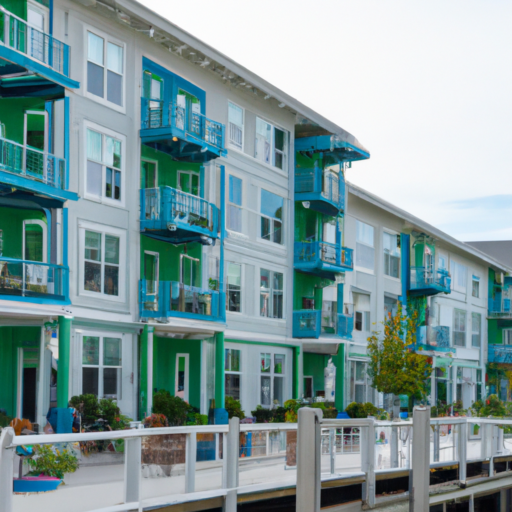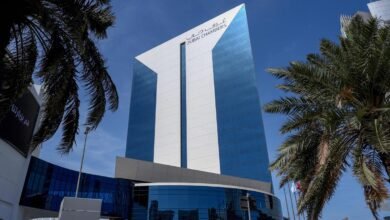
Residential Real Estate Market Size: Growth Trends & Forecast 2024-2029
In the ever-evolving landscape of the global economy, the residential real estate sector stands as a critical pillar, shaping not only the urban skyline but also the dreams and investments of millions. From apartments in bustling cities to villas in serene locales, the wide array of residential properties reflects diverse consumer preferences and economic backgrounds. This sector’s significance is underpinned by its impact on homeownership rates, housing supply, and property prices, thereby influencing both the macroeconomic framework and individual financial well-being. As urbanization accelerates and mortgage rates fluctuate, understanding the dynamics of the residential real estate market becomes essential for home buyers, real estate investors, and policy-makers alike.
This article delves into the residential real estate market, examining its growth trends and offering forecasts for the years 2024 to 2029. It dissects market dynamics, highlighting the influence of factors such as mortgage rates, affordable housing initiatives, and real estate development on the demand for residential properties. Furthermore, it provides insights into the type-based market size, contrasting the demands for apartments versus villas, and unpacks regional market insights that showcase how urbanization and real estate investment trends vary globally. Additionally, it explores consumer buying behavior, industry regulations, government initiatives, and the anticipated shifts in property prices, housing supply, and rental yields. This comprehensive analysis aims to equip stakeholders—ranging from potential home buyers to real estate companies—with the knowledge to navigate the complexities of the residential real estate market effectively.
Market Dynamics
Market Drivers
The residential real estate market is experiencing significant growth, driven by several key factors. Firstly, the increasing demand for housing, fueled by population growth and urbanization, continues to push the market forward. As more individuals move towards urban centers seeking better employment and living conditions, the need for residential properties escalates. Additionally, rising disposable incomes enable more consumers to invest in real estate, further bolstering market growth. Low interest rates also play a crucial role by making borrowing more affordable, thus facilitating increased property purchases.
Market Restraints
However, the market faces notable challenges. One of the primary restraints is the limited supply of new homes, which fails to keep up with the escalating demand, particularly in major cities. This imbalance leads to rising property prices, making homeownership less accessible for many. Furthermore, the increasing cost of borrowing is another significant hurdle. Despite historically low interest rates, recent upticks have made mortgages more expensive, particularly impacting first-time home buyers who are typically more sensitive to price changes.
Opportunities
Despite these challenges, the market presents several opportunities. There is a growing demand for sustainable real estate, as more individuals seek energy-efficient and environmentally friendly homes. This shift is creating new avenues for developers and investors who are now focusing on green building practices. Another burgeoning area is the rental property market. With many unable to afford home purchases, the demand for rental units is on the rise, providing opportunities for landlords and property management firms. Additionally, technological advancements in real estate, such as the use of AI and virtual reality, are transforming how properties are marketed and managed, opening up new prospects for innovation in the sector.
These dynamics illustrate the complex interplay of factors influencing the residential real estate market, highlighting both the challenges and opportunities that stakeholders need to navigate.
Type-Based Market Size
Apartments and Condominiums
In the UAE residential real estate market, apartments and condominiums are increasingly dominant, primarily due to their strategic locations in major urban centers such as Dubai and Abu Dhabi. The allure of apartment living is significantly enhanced by the convenience it offers—proximity to business districts, retail centers, and entertainment venues. This makes it particularly appealing to young professionals and expatriates who prioritize easy access to work and vibrant urban lifestyles. Modern amenities such as enhanced security, maintenance services, and community facilities including swimming pools, gyms, and recreational areas further enrich the living experience in these residential types.
The investment potential in apartments and condominiums is also noteworthy. The ongoing urbanization and a steady influx of international workers sustain a robust demand for rental properties, making this segment particularly attractive to real estate investors. Apartments generally provide a more accessible investment threshold compared to villas, appealing to both novice investors and those seeking to maximize rental yields. The continuous development of new high-rise buildings and luxurious condominium projects by prominent developers offers a range of sophisticated living options, catering to various budget levels.
Landed Houses and Villas
Conversely, landed houses and villas cater to a different segment of the market, often appealing to those seeking larger living spaces with outdoor amenities. This preference has been amplified by the shift towards remote working and online learning, driving demand for homes that offer more room and privacy. In Dubai, the sales prices for villas in sought-after locales like Palm Jumeirah and Emirates Hills have seen increases, reflecting a healthy demand in both the affordable and luxury segments.
The market for villas and landed houses has also benefited from various government initiatives aimed at boosting market sentiment. These include the introduction of residency permits for retirees and remote workers, and the expansion of the 10-year golden visa program, which have collectively enhanced the attractiveness of investing in this segment. Additionally, the market’s recovery post-COVID-19, supported by economic reforms and accelerated vaccination efforts, suggests a continuing upward trend in property prices and demand for residential real estate in the UAE.
In summary, the type-based market size in the UAE showcases a dynamic and segmented landscape, with apartments and condominiums offering urban convenience and investment opportunities, while villas and landed houses attract those looking for more spacious and luxurious living options.
Regional Market Insights
North America
The residential real estate market in North America is characterized by a strong demand for sustainable and energy-efficient properties, driven by changing customer preferences and environmental concerns. Urban living continues to attract a significant portion of the population, particularly young professionals and families seeking proximity to employment and cultural amenities. This trend is supported by robust economic conditions, including low interest rates and a strong economy, which enhance the overall market stability and growth. Innovations such as smart home technology and virtual real estate tours are increasingly becoming standard, reflecting the region’s focus on technology and innovation.
Europe
Europe’s residential real estate market is experiencing growth influenced by customer preferences for smaller, energy-efficient homes and a shift towards co-living spaces. The demand is particularly high in urban areas due to limited new housing developments and the conversion of existing buildings to residential units. Macroeconomic factors like low interest rates and economic stability continue to attract investors, with a noticeable trend towards properties that offer flexible living and working solutions. The market is also seeing a rise in demand for properties in rural areas, driven by individuals seeking quieter, nature-oriented lifestyles.
Asia-Pacific
The Asia-Pacific residential real estate market showcases resilience and dynamic growth, with significant developments in branded residences and luxury apartments. Urbanization and economic growth drive demand, particularly in cities like Manila and Mumbai, where residential prices are expected to rise. The market sees varied trends, from the popularity of high-end, hotel-branded residences to the increasing demand for rental properties due to urban migration and economic factors. Innovations in property management and a shift towards more luxurious, downsized living options are also evident in the region.
Middle East & Africa
The Middle East and Africa are witnessing an expansion in the real estate sector, supported by economic growth and urbanization. The luxury market in cities like Dubai continues to attract high net worth individuals with record property sales. The region is also experiencing a growth in the demand for data centers, reflecting its technological advancement. Real estate markets in the Middle East are adapting to economic diversifications and showing a strong demand for high-grade residential properties.
Latin America
In Latin America, the residential real estate market is driven by urbanization and a growing middle class. The market faces challenges such as housing affordability, especially in major cities where economic disparities are significant. However, there are opportunities in rental markets and luxury real estate, particularly in cities like Mexico City and Montevideo, which command high property prices. The region’s diverse economy offers various real estate opportunities, from high-risk, high-return investments to more stable options in established markets.
Consumer Buying Behavior
Socioeconomic Insights
Consumer buying behavior in the residential real estate market is significantly influenced by socioeconomic factors, including income levels and macroeconomic conditions. Research highlights that in regions like Bangladesh, rapid urban migration and population growth have escalated the demand for urban housing, particularly apartments. Income levels play a crucial role in determining the choice of area, with higher income groups typically gravitating towards premium locales. Additionally, the global analysis of housing markets in OECD countries reveals that gross domestic product (GDP) and inflation are pivotal in shaping real estate prices. For instance, countries like Norway and Sweden exhibit a strong correlation between GDP growth and housing prices, suggesting that economic prosperity is directly linked to increased housing demand and higher property values.
Demographic Insights
Demographics provide a deep insight into the residential real estate market, affecting everything from the types of properties in demand to their pricing. Major demographic shifts, such as aging populations or changes in family structures, can influence real estate trends for decades. For example, the increasing number of retirees may boost the demand for second homes in vacation spots, while smaller household sizes could reduce the demand for larger homes. In Dubai, the average age of home buyers is 32, reflecting a trend towards younger professionals entering the real estate market earlier. This demographic is drawn to modern living spaces and innovative financing options, indicating a shift in preferences towards convenient and sustainable living environments. Furthermore, the rise in single home buyers, accounting for a significant portion of the market, underscores a shift towards individual homeownership as both a personal achievement and a strategic investment.
The demographic profile also varies significantly with marital status and employment. For instance, single individuals often prioritize different property features such as location and amenities compared to families. Employment status influences affordability and thus the type of properties that are within reach for potential buyers. In markets like Dubai, expatriates constitute a substantial portion of buyers, attracted by the city’s tax policies, lifestyle, and investment opportunities. This diverse demographic landscape necessitates tailored marketing strategies and product offerings to meet the varied needs and preferences of potential buyers in the residential real estate market.
Industry Regulations and Government Initiatives
Regulatory Aspects
The regulatory framework within the UAE real estate market is complex and varies significantly across different Emirates. Institutions act as the “rules of the game” for society, with regulation serving as a critical instrument for public intervention in real estate and urban markets. The absence of clearly defined and enforceable property rights is often cited as a major source of market failure. Each Emirate has developed its own specific land ownership policies through local orders and decrees, with no specific Federal Property Law in place. This has led to a diverse landscape where each Emirate evolves its real estate market policies at its own pace, sometimes drawing on the successful models of others.
The Dubai Land Department (DLD) oversees all real estate activities within Dubai, maintaining a comprehensive land registry and a regulatory system for property transactions. The Real Estate Regulatory Authority (RERA), a division of the DLD, is tasked with setting laws and regulations specific to the real estate sector. These regulations cover a wide range of activities, including resolving tenancy disputes, regulating foreign investment, licensing real estate brokers and developers, and monitoring financial institutions involved in the real estate sector.
Government Programs
The UAE government has implemented various programs to support the real estate sector, focusing on both local and foreign investments. At the federal level, the Ministry of Energy & Infrastructure organizes the housing sector, while UAE nationals can apply for housing or residential lands through the Housing Allocation Committee at the Presidential Court. Initiatives such as the Sheikh Zayed Housing Programme and the Mohammed Bin Rashid Housing Establishment provide financial support and housing assistance to Emiratis, offering benefits such as interest-free loans and grants.
Significant initiatives also include the Golden Investor Visa, which allows real estate investors to obtain residency in the UAE by investing in properties, and the Rent-to-Own Scheme, administered by the Dubai Land Department, which offers tenants the possibility to eventually own the homes they rent. Additionally, the Mortgage Cap Program provides qualified UAE citizens with mortgage financing at lower interest rates, supporting homeownership among UAE nationals.
These regulatory frameworks and government programs are designed to create a stable and attractive investment environment, encouraging both local and international participation in the UAE’s real estate market.
Market Forecasts (2024 – 2029)
Growth Trends
The residential real estate market in the UAE is anticipated to experience robust growth, with a Compound Annual Growth Rate (CAGR) projected at over 8% during the forecast period from 2024 to 2029. This growth is underpinned by several key factors including strategic government initiatives, evolving lifestyle preferences, and a sustained influx of international investments. The Dubai residential property market, in particular, is expected to witness a steady rise in prices, reflecting a balance between affordability and sustainable growth. This trend is likely to be supported by the UAE’s economic growth forecast of 4.5%, which bolsters investor confidence in the real estate sector.
Projected Market Sizes
The global residential real estate market is set to expand significantly, with the market size projected to reach US$0.52 trillion by 2024 and further grow to US$0.60 trillion by 2028 at a CAGR of 3.64%. In regional terms, the US & Canada market for residential real estate is estimated to increase from $ million in 2023 to $ million by 2029, reflecting a healthy growth trajectory during the period. Similarly, the China market is expected to rise substantially from $ million in 2023 to $ million by 2029.
The luxury segment of the UAE’s residential real estate market also shows promising prospects, with the market size valued at USD 13.7 billion currently and anticipated to register a CAGR of over 8% through the forecast period. The luxury home market in Dubai is poised to continue its upward trajectory, driven by rising demand and a significant interest from the international elite, including an increasing number of Ukrainian and Russian buyers.
These projections reflect a dynamic market environment where technological advancements, demographic shifts, and a focus on environmentally conscious realty practices are expected to play pivotal roles in shaping the future landscape of the residential real estate market globally.
Through this exploration, we’ve uncovered the vast and intricate canvas of the residential real estate market, touching upon key dynamics such as market drivers, challenges, opportunities, and pivotal trends that are shaping the global landscape from 2024 to 2029. Encapsulating insights across various market dimensions—from consumer behavior and demographic shifts to regulatory frameworks and government initiatives—we’ve highlighted the profound impact these elements have on the industry, painting a comprehensive picture for stakeholders. Moreover, the forecasted growth underscores the sector’s potential, propelled by technological advancements and shifting lifestyle preferences, emphasizing the market’s resilience and adaptability in the face of evolving economic and societal contexts.
Looking ahead, the predictions for the residential real estate market shed light on promising opportunities, underscored by a projected robust Compound Annual Growth Rate (CAGR) and an increasing inclination towards sustainable and luxury living spaces. These tendencies not only delineate the direction in which the market is headed but also underscore the importance of strategic investment and development choices to meet the nuanced demands of a diverse clientele. Hence, as we move towards 2029, the insights provided serve as a critical guide for investors, policymakers, and industry players, offering a foundation upon which future strategies can be built, ensuring the sector’s growth remains aligned with broader economic and environmental considerations.






